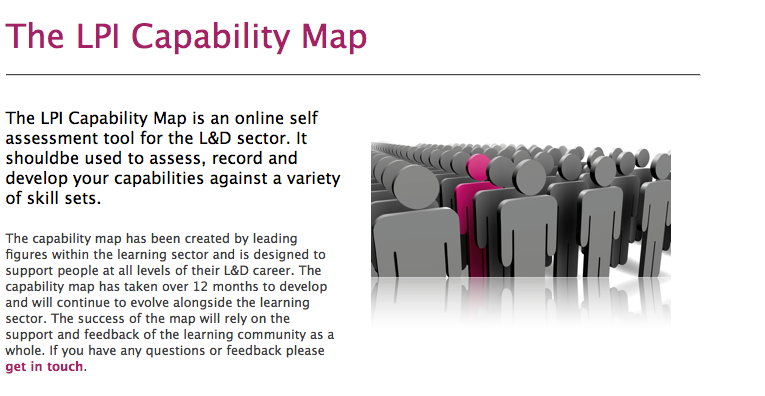Nearly 500 L&D professionals have self-assessed their skills using the Learning and Performance Institute Skills Capability Map since it launched a week ago at the Learning 2012 Conference.
The tool helps professionals working in learning and development to self-assess against 27 skills (see below). LPI chairman Donald Taylor said he hoped the map would be, ‘simple enough to be usable and complex enough to be useful’. Existing capability frameworks were either so complex you needed a consultant to implement them or too simplistic to be of any value. He hoped this new map would achieve the right balance.
A year in the making, the LPI has consulted widely to identify the current skills used by L&D. These skills were then validated by industry practitioners and thought leaders such as Charles Jennings, former chief learning officer at Thomson Reuters and Nigel Paine, former chief learning officer at the BBC.
In the first instance the map is intended to be a diagnostic tool enabling practitioners to assess themselves against 27 high level skills and to see where others in similar jobs are on the map and what they need to do to develop their skills and capability. By asking for job title when a user takes an assessment the institute hopes to develop a picture of which skills are associated with certain jobs within L&D.
Taylor says the aim of the map is to create a common language around skills for L&D in the 21st century.
“Our main focus has been on how organisations can use this internally to help develop the skills and capability of L&D teams for current and future needs. It is what L&D does for everybody else – it is time we started doing it for ourselves.”
As well as providing individuals with a snapshot report on skills, it also shows what they need to do to get to the next level of competency.
The LPI is also looking at how it can develop the map. Taylor said that at some point it would make sense to link it to some forms of intervention to support an individual’s skills development but at this stage in the product’s development he did not want to suggest how this might happen.
“Whatever we map to this is not going to be exclusive – we would welcome being able to map certification and training courses from a wide range institutions. I think it is essential for us to make it what it needs to be – the common language for skills for our profession in the 21st century,” he said.
Taylor said he could see a future when the map is not purely self-assessment – instead someone else could qualify an individual’s skills, although he wouldn’t be drawn on when this might happen. Currently the tool is just a self-assessment tool.
The data is already providing insights into L&D capability and he said the LPI would be sharing data on the map towards the end of the first quarter of 2013. He said he would expect the data to identify skills the profession needs to improve on as well as current strength areas.
The 27 skills
- Presentation delivery
- Face to face delivery
- Virtual/online delivery
- Design
- Content creation
- Performance support
- Coaching
- Mentoring
- Supporting work teams
- Supporting communities of Practice
- Supporting content co-creation and curation
- Developing collaborative learning skills
- Performance analysis
- Competency management
- Assessment and evaluation
- Learning strategy
- Information architecture
- Data interpretation
- Project management
- Change management
- People management and development
- Process management and improvement
- Resource management
- Financial management




